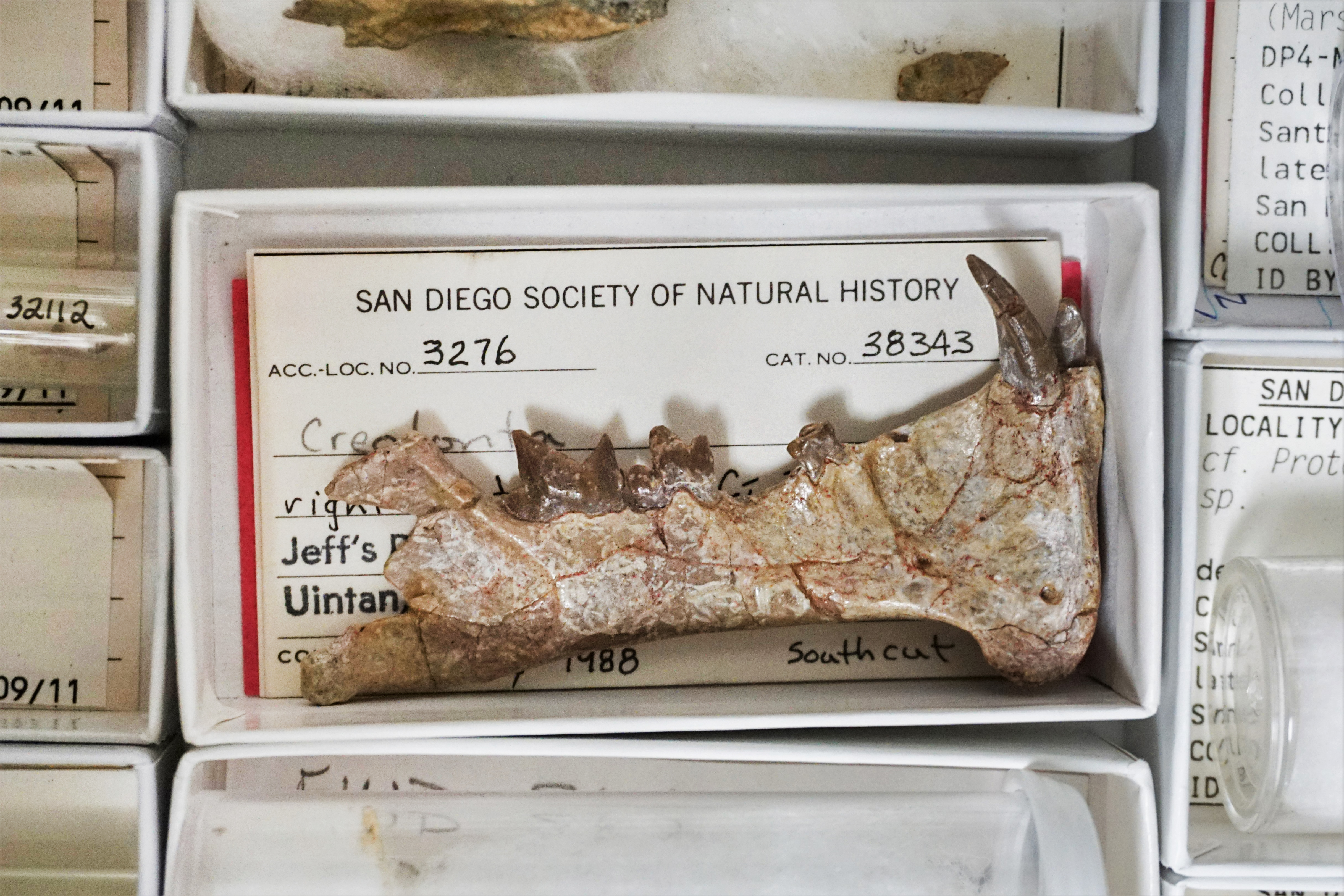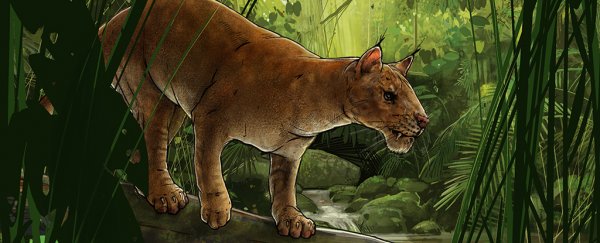If you've ever lived with a cat, you've probably received a painful chomp from your beloved furball's pointy canines at least once.
But 42 million years ago, your kitty's teeth would have looked very different: Evolution was only just honing the teeth of cat-like animals to a deadly sharp tip for piercing and shredding flesh.
A new paper has described one of the earliest known cat-like predators in the west coast of North America, giving us new information about these ancient predators and the evolution of modern carnivores.
"Today the ability to eat an all-meat diet, also called hypercarnivory, isn't uncommon. Tigers do it, polar bears can do it. If you have a house cat, you may even have a hypercarnivore at home. But 42 million years ago, mammals were only just figuring out how to survive on meat alone," says paleontologist Ashley Poust from the San Diego Natural History Museum.
"One big advance was to evolve specialized teeth for slicing flesh – which is something we see in this newly described specimen."
The newly described creature, named Diegoaelurus vanvalkenburghae, is known from just a piece of a lower jaw with some teeth attached, but the teeth provide us with a lot of information about this ancient predator.
D. vanvalkenburghae is part of the subfamily of extinct cats called Machaeroidinae – meaning 'dagger-like'. This fossil appears to be the most recent machaeroidine found, and is vastly different from its closest known relative, Apataelurus kayi.
"Nothing like this had existed in mammals before," says Poust.
"A few mammal ancestors had long fangs, but Diegoaelurus and its few relatives represent the first cat-like approach to an all-meat diet, with saber-teeth in front and slicing scissor teeth called carnassials in the back. It's a potent combination that several animal groups have independently evolved in the millions of years since."
 The jaw. (San Diego Natural History Museum)
The jaw. (San Diego Natural History Museum)
It's important to note that other subfamilies have also evolved saber-tooth predators, including the similarly named Machairodontinae, which contains Smilodon fatalis, the most famous saber-toothed cat.
The jaw has actually been in the museum's collection since 1988, but was only recently analyzed by the team. The fossil was unearthed from 42-million-year-old rock bed called the Santiago Formation in San Diego. This formation goes back to the Late Eocene, and can give us information from a time when the world was warmer and California was a humid forest.
"The Santiago Formation fossils show us a forested, wet California where tiny rhinos, early tapirs, and strange sheep-like, herbivorous oreodonts grazed under trees while unusual primates and marsupials clung to the canopy above," says Poust.
"This richness of prey species would have been a smorgasbord for Diegoaelurus, allowing it to live the life of a specialized hunter before most other mammals."
For now, this is the only fossil of Diegoaelurus, making it a little lonely in the San Diego Museum collection, but as we continue digging deeper, we might discover even more sharp-toothed friends.
The paper has been published in PeerJ; a 3D-model of the fossil can be viewed here.
